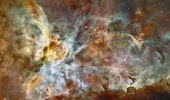The Physics & Astronomy Colloquium Series presents Melina Avila of Argonne National Laboratory on “Understanding Stellar Processes Through Nuclear Reactions” on Tuesday, Jan. 19, at 4:10 p.m. in Walter 245.
Abstract: The understanding of stellar nucleosynthesis is one of the driving forces of nuclear astrophysics. Nuclear reactions provide an essential input for models of stellar evolution, energy generation in stars and stellar explosions. For instance, a large number of proton and α induced reactions such as (p,γ), (α,γ), (α,p) and (α,n) are known to play an important role in different astrophysical scenarios. In general, direct measurements are preferred. However, many of these reactions cannot be measured directly at relevant astrophysical energies because of their small cross section and it becomes crucial to have a reliable indirect technique to evaluate them. Extracting the Asymptotic Normalization Coefficients (ANCs) using sub-Coulomb transfer reactions can be used as an effective method to determine properties of near-threshold resonances, thus constraining key astrophysical reaction rates.
In this talk, I will discuss different α induced reaction measurements using both direct and indirect techniques for nuclear astrophysics studies. Results on α-transfer reactions using the ANC technique at sub-Coulomb energies will be presented. In addition, I will also discuss results on direct measurements of (α,p) and (α,n) reactions using the active target system MUSIC.
















Comments